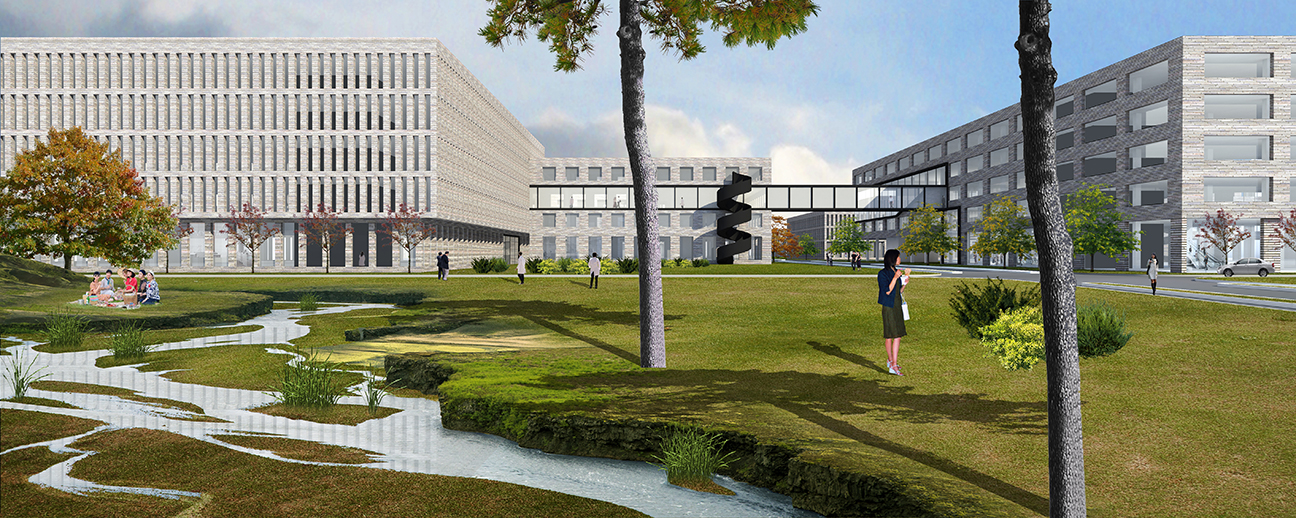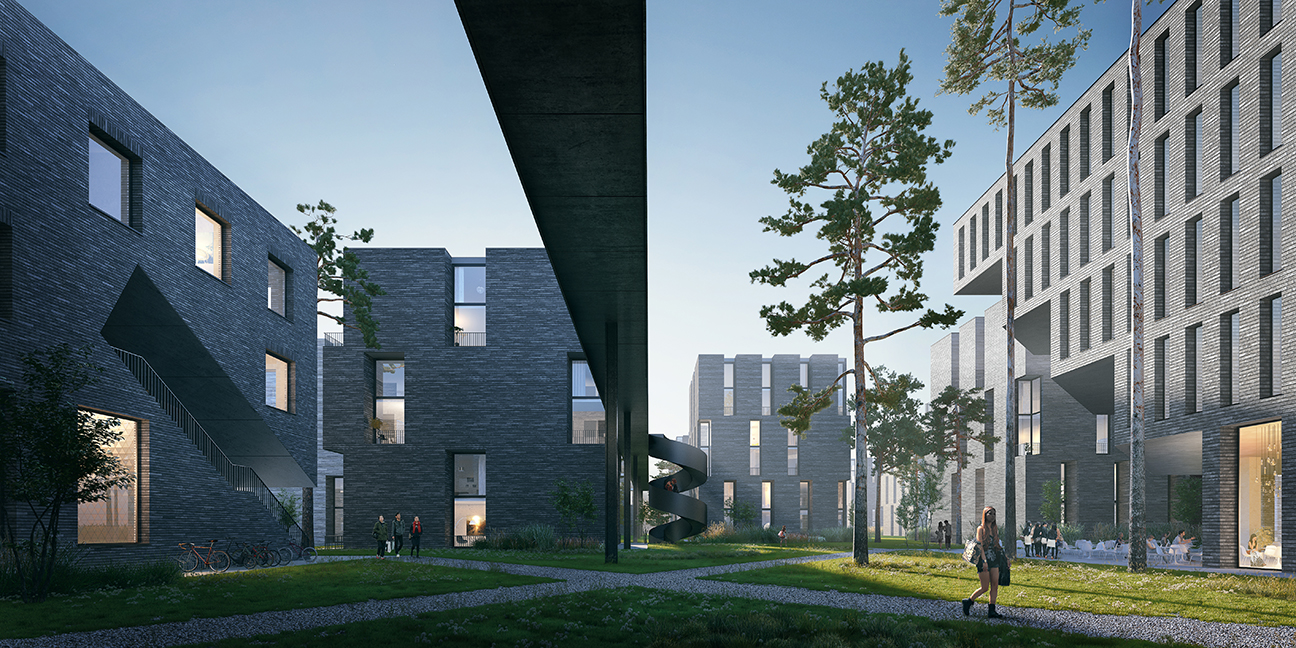Xi’An Technology Campus
The proposed design for a university campus interprets banal restrictions and requirements into an organizational strategy for the project. The given 50% coverage requirement of the masterplan becomes an overall composition and checkerboard pattern. The effect is a balance between built and unbuilt, and inside and outside. While the proposed design consists of 32 individual buildings, it achieves an overall unity and cohesiveness through the precise and geometrical positioning of its parts.

The checkerboard is also configured as a gradient. This accommodates a catalog of different building types; from dormitory towers to high-efficiency low-rise student housing, slabs, courtyard buildings, and individual blocks. Despite their difference, all buildings work within the same system, mostly based on highly pragmatic square footprints and standard planning grids. Nonetheless, the diversity of building types produces a variety of different possible floor plan layouts, assuring flexibility to address current and future needs.

The checkerboard pattern creates alternating, open spaces. These spaces present a range of different conditions: large, small, enclosed, semi-enclosed, open, public, and private. Generally, the scale and qualities of these spaces have been adopted based on observations of comparable spaces in existing, successful campuses. The cumulative effect is a range of different types of public space within the project. Moreover, the checkerboard creates a porousness and openness at it edges, connecting the project to its surroundings.

The Pedestrian Linkage is an elevated network of pedestrian bridges and lobbies that connects many of the buildings within the project at level +10.2m. It is easily recognized by its contrasting black material and finishes. The Pedestrian Linkage is entered internally through buildings, or by a number of exterior spiraling ramps and stairs. These exterior spiraling elements also act like signs for the system. It is envisioned that pedestrian linkage will become a space of convenient access, but also informal interaction and chance encounter.



Project Information
| Type | Masterplan |
|---|---|
| Location | Xi’An, China |
| Status | Competition, 2016 |
| Scale | 3,289,290 SF (305,585 m2) |
| Collaboration | Ingameoffice Shenzhen |
| Renderings | Tegmark |
| Team | Karolina Czeczek, Matthew Davis, Adam Frampton, James Schrader, Jon Siani |

